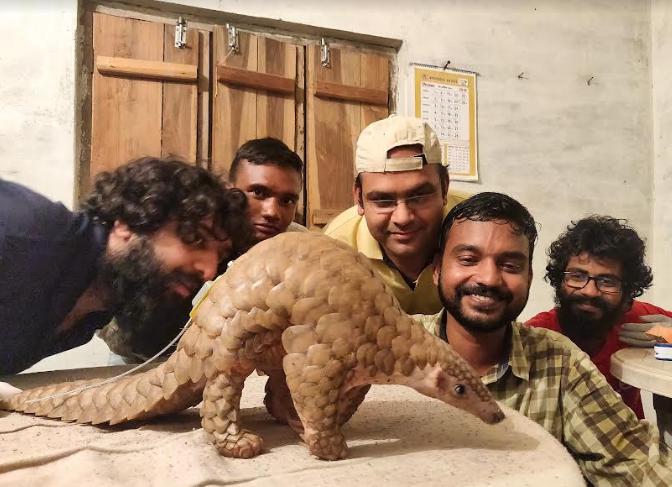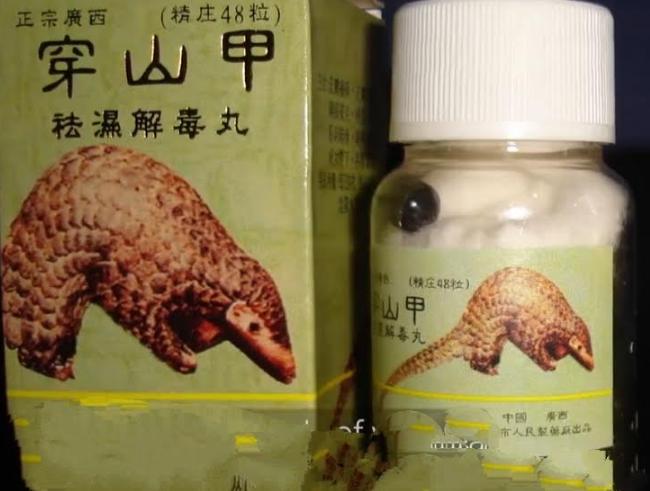Radio Tagging Ray of Hope
In a major conservation programme for the scaly anteater, the radio tagging of the shy nocturnal animal started in the central India state in 2020 . The WCT along with the state forest department radio-tagged the first Indian Pangolin (Manis crassicaudata) on February 14 2020 in Satpura National park . So far six pangolins have been radio tagged and rehabilitated in the wild, said Aditya Joshi, wildlife biologist with the WCT. He is overseeing the project. “ Five among the six were the pangolins rescued from smugglers while one was wild”, Joshi said. A similar programme may start in Nandan Kanan in Odisha soon. The individuals are monitored in the wild using telemetry to understand their habitat and movement. The project is also an international attempt to raise awareness about pangolins and bring together various stakeholders to help protect them from extinction.
Also read: Which animal is on the brink of extinction after increased demand from china
In most cases pangolin scales are seized after killing the animal. Hence it is critical to focus on source sites. The rehabilitation success of these pangolins is highly dependent on site selection and post-release monitoring after radio tagging . “This is what this project is based upon”, the biologist said . There are no reliable estimates for any of the 8 species of pangolins. The challenge lies in efficiently detecting the presence of these elusive nocturnal animals. However, intensive surveys of active burrows and some indexes can be developed in the near future. One of the major challenges is the increasing demand for pangolin meat and scales in the Southeast Asian markets, especially China. Another emerging trend is the seizure of live pangolins from locals who are not associated with wildlife poaching but are opportunistically drawn to capture pangolins due to the high monetary value cited in the media. Degradation of their habitat due to forest fires and loss of understory vegetation is also a major cause of concern.
Boiled and Roasted, Chinese Consume Pangolins
Pangolins are scaly from tip to tail and can curl into a ball to protect themselves from predators in the wild. Many times even strong predators like lions have not been able to harm a pangolin as it coils into a scaly ball. But the greed of human beings is different. Though the strong canines of predators have failed to penetrate the scaly ball, humans have poached the animal for its mean and scales. The animal is boiled to remove the scales, which are dried and roasted, then sold for consumption in traditional Chinese medicines among others .
Also read:Lion Spillover From Gir National Park , Gets Closer To Ahmedabad
However, people forget that pangolin scales are made of keratin, the same material that makes up fingernails, hair, and horn. And like rhino horn, pangolin scales have no scientifically proven medicinal value. Their meat is considered a delicacy and pangolin scales are used in traditional medicine and folk remedies to treat a range of ailments from asthma to rheumatism and arthritis. There is also demand in the Americas for their skins used to make leather products like boots, bags, and belts.
Pangolin :Protector of Forest
An adult pangolin can consume more than 0.66 pounds of termites in one meal. Thanks to their big appetite, one pangolin can protect a large jungle area -as large as 31 football fields (41 acres) -from termite destruction. A pangolin’s scales weigh approximately 20 % of its total mass. These solid scales are their weapon and at the same time enemy too. There are 8 pangolin species found on two continents. They range from Vulnerable to Critically Endangered. Four species live in Africa: Black-bellied pangolin (Phataginus tetradactyla), White-bellied pangolin (Phataginus tricuspis), Giant Ground pangolin (Smutsia gigantea) and Temminck's Ground pangolin (Smutsia temminckii). The four species found in Asia include Indian pangolin (Manis crassicaudata), Philippine pangolin (Manis culionensis), Sunda pangolin (Manis javanica) and the Chinese pangolin (Manis pentadactyla).
Also read: Egyptian Vultures: Victims of Myths And Misconceptions
All these species are protected under national and international laws but that is not stopping the massive international illegal trade in pangolins, which has increased in recent years because of growing demand. All these species are protected under national and international laws, and two are listed as Critically Endangered on the IUCN Red List of Threatened Species.





Comments
Post a Comment